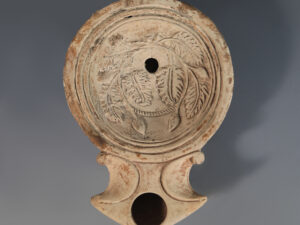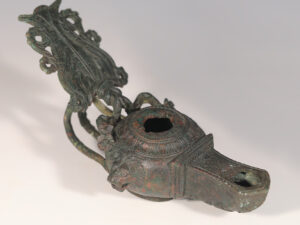This shaped oil lamp was popular from the 3rd–1st century BC, prolific during the Hellenistic period. This example heralds the rise of mould-made lamps, which were made in two halves, each of which comprised a layer of damp clay, impressed in a mould before the two halves of the mould were pressed together. Mould-made lamps were preceded by wheelmade lamps, and did not start appearing until the beginning of the third century BC. This new method allowed for mass reproduction of oil lamps, as well as greater versatility in their size, shape, and decoration. Examples of this particular shape are linked to ‘Ephesus’ type lamps and are thought to have originated in Asia Minor. Classification is still quite fluid, due in part to the many variants found on examples. This piece, with it’s dark red colouring, suggests an Egyptian origin. Asia Minor examples are often made using grey clay, in comparison.
To discover more about oil lamps in Antiquity, please visit our relevant blog post: Lighting The Way.






















